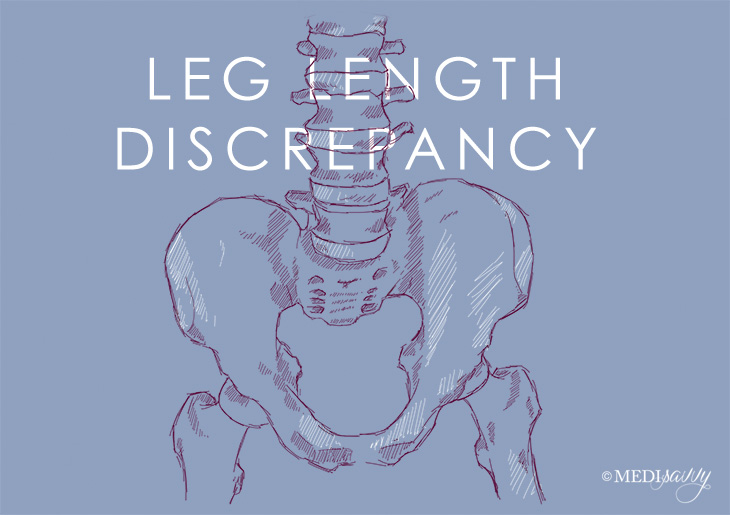Do you suffer from a leg length discrepancy
Posted on February 15th, 2017 by Andries Lodder
By Jennifer Steele
A leg length discrepancy is when the two limbs of the lower extremity are not entirely symmetrical and one leg is slightly longer than the other. Approximately 70% of the population have this discrepancy, with the average difference in length usually being less the 1.1cm. As the difference is usually so small most people can compensate for the difference without even realizing they have it.
Leg length discrepancies cause can be classified as either structural, functional or environmental.
Structural
This discrepancy is caused by the actual anatomical shortening of one or more of the bones of the lower extremity. This shortening can be caused by a growth plate injury, a fracture to one of the bones, or a genetic or acquired condition that affected the actual growth of the bones. A spinal abnormality such as scoliosis can also cause a structural leg length discrepancy.
Functional
Unlike a structural discrepancy, a functional one is caused rather by muscular weakness or tightness in the pelvis or foot and ankle complex. 60% of the population experience functional leg length discrepancies.
Environmental
This cause is a very minor classification and is most commonly found in runners. It occurs when difference in leg length is caused by the shape, camper or curve of the road that a runner runs on. Excessive use of running shoes cause the shoes soles to become asymmetrical and can also cause a discrepancy. As leg length discrepancy is the third most common cause of running injuries this minor classification of the cause the leg length difference becomes very important in diagnosing and treating running injuries.
Signs & Symptoms associated with leg length discrepancies
Even though most people can compensate for a leg length discrepancy when the body is placed under stress, for example during running, this is when the discrepancy starts to cause problems and the individual starts to notice symptoms or pain.
Most commonly individuals will experience lower back pain. As the muscles of the hips, pelvis and lower back try to compensate for the discrepancy.
Majority of individuals who experience lateral patellar femoral pain, or pain on the outside of the knee cap, have a functional leg length discrepancy and pain usually occurs in the longer leg. The reason behind this pain is the body will increase the Q angle of the longer leg and this will cause lateral tracking of the patella. The patellar then doesn’t move smoothly across the grooves of the femur, instead it moves across the femur itself.
Individuals with a leg length discrepancy may also experience an anterior pelvic tilt, scoliosis of the lumbar spine, increased knee flexion of the longer leg and pronation of the subtalar joint on the longer side.
Diagnosis
When assessing an individual for a leg length discrepancy, two measurements can be taken. An apparent leg length measurement and a true leg length measurement.
The apparent leg length is a measurement taken from the umbilicus or belly button of the individual straight down to their medial malleolus or inside ankle bone. Differences in leg length when using this measuring technique indicate that the discrepancy is mainly cause by muscle tightness or weakness.
True leg length is measured from the anterior superior iliac spine, or hip bone in a straight line down to the medial malleolus. A discrepancy in this measurement indicates that more than likely the individual has a structural discrepancy due to a shorter bone in one of the leg.
Leg length discrepancies can also be diagnosed using an X-ray. However, these are expensive and not readily available to everyone.
Treatment
Two factors indicate if treatment is required for a leg length discrepancy; the magnitude of the discrepancy and whether the patient is symptomatic or not. Treatment can also either be surgical or non-surgical.
Surgical Treatment
- Most common are shortening procedures to shorten the longer leg as these are safer to do then lengthening procedures. These are usually only done in children who are expected to have a 2-6cm discrepancy at maturity.
Non-Surgical treatment:
- Stretching the muscles of the lower extremity. This will vary for everyone depending whether their Tensor Fasia Latae, Hamstrings, Adductors, Piriformis or Iliopsoas are tight and creating the discrepancy.
- Shoe lifts can also be used to correct minor discrepancies, this can be in the form of a shoe insert or building up the sole of the shoe of the shorter leg.
- Prosthetics can also be used in some cases.
Tweet
